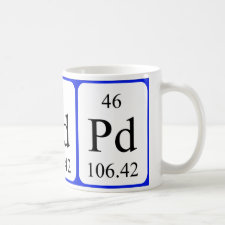
Authors: Monier M, Abdel-Latif DA, Abou El-Reash YG
Article Title: Ion-imprinted modified chitosan resin for selective removal of Pd(II) ions.
Publication date: 2016
Journal: Journal of Colloid and Interface Science
Volume: 469
Page numbers: 344-354.
DOI: 10.1016/j.jcis.2016.01.074
Alternative URL: http://www.sciencedirect.com/science/article/pii/S0021979716300753
Abstract: In this work, a selective Pd(II) ions chelating resin based on 2-aminobenzaldehyde modified chitosan Schiff's base (Pd-CAZ) was synthesized through ion-imprinting technique. All the performed chemical and morphological changes during the modification and Pd(II) ion-imprinting process were investigated using instrumental techniques including FTIR, 1H NMR, XRD and SEM. In addition, the mechanism of Pd(II) binding to the synthesized polymeric active sites was elucidated using both XPS and FTIR spectra, and the results indicated that Pd(II) ions coordinated in square planar geometry. Also, the selective extraction experiments with respect to Pd-CAZ and control non-imprinted NI-CAZ resins were performed to obtain the fundamental thermodynamic, kinetic and isotherm parameters. In all cases the adsorption was endothermic, spontaneous, fit well with pseudo-second order kinetic model and Langmuir adsorption isotherm model with maximum adsorption capacities of 275 ± 0.4 and 114 ± 0.2 mg/g for Pd-CAZ and NI-CAZ, respectively. Moreover, the regeneration and recovery experiments indicated that the resin maintain about 96% of its original activity after the fifth adsorption-desorption cycle, revealing the high economic value
Template and target information: palladium ion, Pd(II)
Author keywords: chitosan, Schiff base, palladium ion, Ion-imprinting



Join the Society for Molecular Imprinting

New items RSS feed
Sign-up for e-mail updates:
Choose between receiving an occasional newsletter or more frequent e-mail alerts.
Click here to go to the sign-up page.
Is your name elemental or peptidic? Enter your name and find out by clicking either of the buttons below!
Other products you may like:
 MIPdatabase
MIPdatabase









